What happens when you live in a cemetery? A resident shares chilling experiences

Residents have spent thousands of rands building houses inside Azalea Graveyard in Pietermaritzburg.
Image: Bongani Hans
Imagine you wake up in the still of the night to check a strange noise outside your house, only to see something that looks like a human being wearing white clothes standing in your yard, but you cannot see the head.
This is a hair-raising vision that Nombifikile Mncwabe*, who lives in Azalea Cemetery in Pietermaritzburg, claimed to have seen two years ago.
Mncwabe, is among hundreds of residents who, many years ago, invaded the Msunduzi Municipality’s graveyard to build large houses.
Most of the residents have finished building their homes and are now occupying them, while some half-built houses look abandoned.
Mncwabe said she bought a plot of land in 2017 from a resident of nearby Willowfontein who claimed to be the land's owner.
She and her neighbours claimed to have spent between R30 000 and R150 000 buying the land, which had graves with some of them visible through heaps of soil with crosses and tombstones.
“One midnight, I was awakened by a strange noise, and when I went outside, I saw something that looked like a man wearing white clothes, but I could not see the head. As I was looking, it vanished.
“Another night I saw a huge white horse, which grew larger as it walked away until it disappeared.
“I am sure that this place is haunted by the spirits of the dead people,” said Mncwabe.
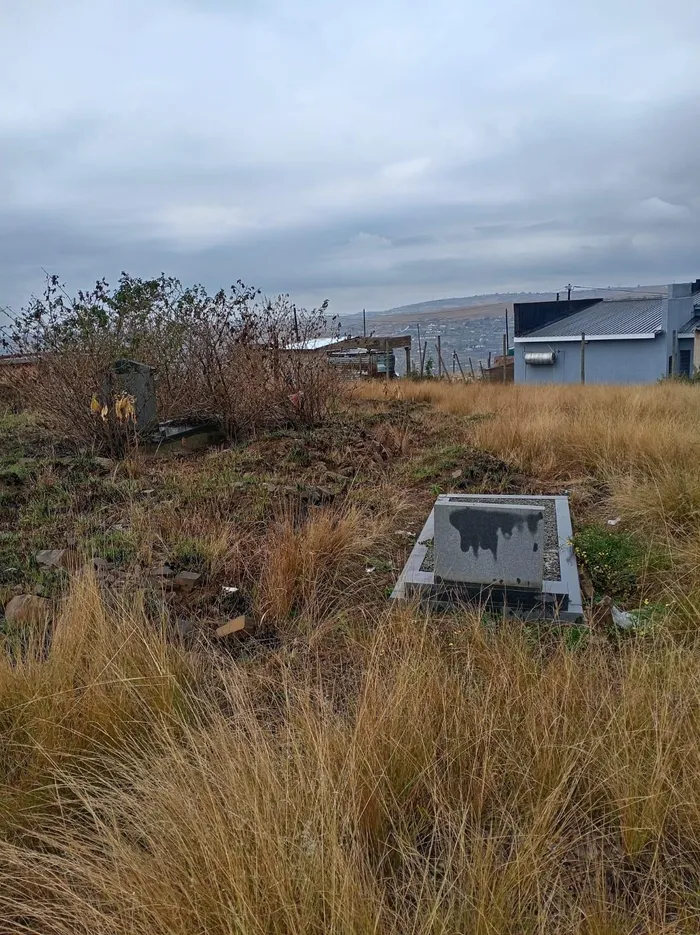
Pietermaritzburg residents building home inside graveyards
Image: Bongani Hans
Mncwabe said she relocated to the area from a low-cost housing settlement in France outside Imbali Township, after her daughter was brutally killed during a house invasion.
“After the incident, I decided to buy this land because France is too dangerous,” said Mncwabe.
The cemetery has also become a dump site, and some of the tombstones have been damaged.
Delivering the budget speech at the Pietermaritzburg City Hall on May 28, city Mayor Mzimkhulu Thebolla expressed concern about invasion at the cemetery, which he said was disturbing the spirits of deceased from resting in peace.
He said the municipality had established a unit that would prevent the escalation of invasion.
He said the invasion was preventing the municipality from keeping the graveyard in good condition.
When this reporter visited the cemetery on Tuesday, it found two security guards posted to prevent further construction of houses.
Zwelakhe Mbanjwa from Willowfontein area said he stopped the construction of a house on top of his grandmother’s grave.
“I discovered the construction when a rondavel was already halfway up on top of two graves, of which one of them was my grandmother’s.
“The owner of the house agreed to demolish it to the foundation, which we have now turned into the tombstone,” said Mbanjwa.
Other residents denied that their houses have been built on top of the graves, saying that they selected vacant spaces.
They said that if the municipality decides to force them to vacate the cemetery, they should be relocated to another area and be compensated.
“Since the municipality did not stop us when we started the construction, it should consider that we have spent hundreds of thousands of rands, and these are loans that we are still paying back to the banks,” said another resident who also asked not to be identified.
Ward 14 councillor Sibusiso Mkhize said, although the homeowners have committed an offence, it should be considered that most of them spend their pension payouts to build homes.
He said although the invaders have built inside the cemetery, only about 10 have built on top of the graves.
“We had resolved a possible conflict, as there were people who were demanding the demolition of the houses that had been built on top of the loved ones.
“We are now waiting for the municipality to come up with a solution to the problem,” said Mkhize.
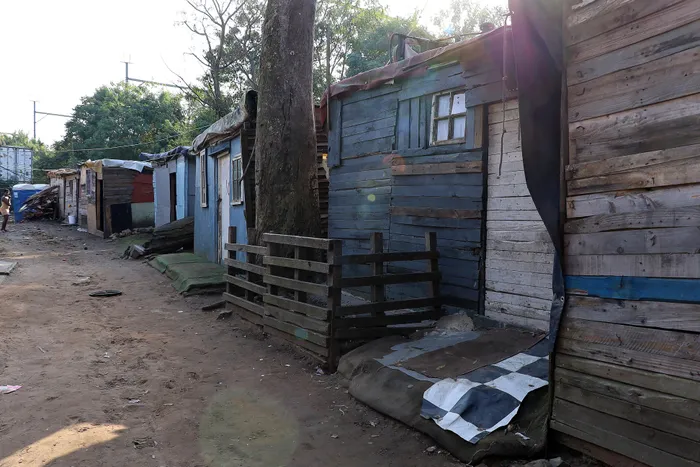
Residents of Seaview Cemetery navigate their daily lives amidst tombstones.
Image: Sibonelo Ngcobo/ Independent Newspapers
In Durban, concern over the construction of informal structures on graves at Seaview Cemetery on Coedmore Road has been reignited.
Construction is believed to have begun in 1990, and today, over 400 people live there, with some building on graves.
When you enter the cemetery where people were supposedly buried many years ago, you are drawn to the tombstones. Sometimes you find a tombstone staring at you from the entrance of a shack, while other times you find it inside a shack, being walked on or slept on. Young children play and chase each other on the graves.
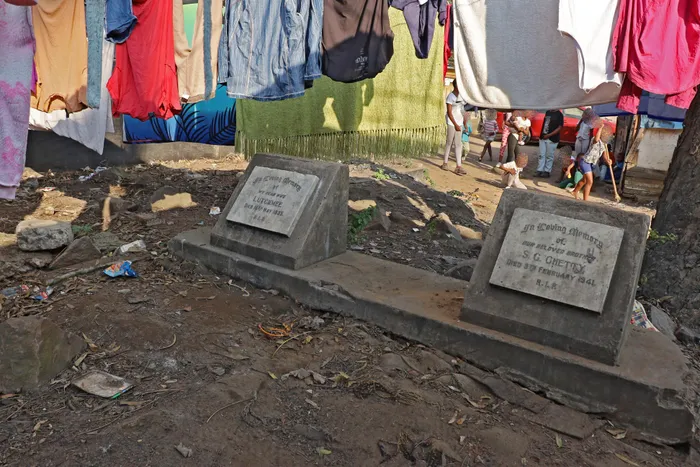
Young children chase each other on the sacred grounds of Seaview Cemetery.
Image: Sibonelo Ngcobo/ Independent Newspapers
Resident Doris Zeka, 50, said she moved from Kokstad to the cemetery about 30 years ago.
She said many residents were from the Eastern Cape.
Zeka acknowledged that living in a cemetery was not okay, but they were desperate.
“We don’t have the means to leave and rent elsewhere,” Zeka said.
She said her informal structure is built around a grave, and they placed a table on it.
“We want to leave because of the heat. It’s too hot here,” Zeka said.
On service delivery, she said they have illegally connected electricity, which officials disconnect.
Zeka said the last time officials visited the area was last year, and they took photographs.
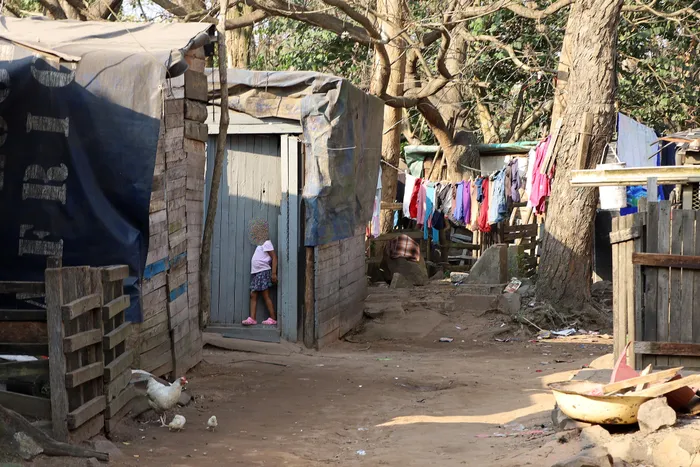
Tombstones form the backdrop to the daily lives of Seaview Cemetery residents.
Image: Sibonelo Ngcobo/ Independent Newspapers
Another resident, Buyelwa Ncedo from Tsolo, Eastern Cape, said she arrived in the area in 1995. She said that relatives of those buried in the graves they built on top of, came until they gave up.
“They got tired because they realised there was no way they could see their relatives’ graves,” Ncedo said.
She said they had never attacked them or taken any action against them because they realised the place had become their home.
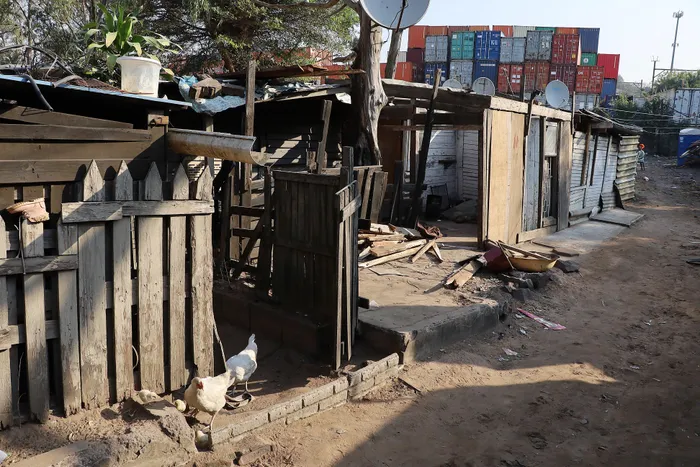
Informal structures built around graves in Seaview Cemetery.
Image: Sibonelo Ngcobo/ Independent Newspapers
KwaZulu-Natal Transport and Human Settlements MEC Siboniso Duma asked department head, Max Mbili, working with the eThekwini Municipality, to accelerate the profiling of families living in the cemetery.
“It should be remembered that shortly after 1994, the democratic government under Nelson Mandela prioritised the construction of houses for communities in the area. The priority was given to the families who had lived in the area since 1981,” Duma said.
He said that in early 2000, the late Housing MEC Dumisani Makhaye, former Housing MEC Mike Mabuyakhulu, former eThekwini Municipality mayor Obed Mlaba and former Human Settlements and Infrastructure Committee chairperson Nigel Gumede presided over the relocation of families from the area to newly built homes in Welbedacht, in Chatsworth.
Duma called on communities to respect the dead.
“Cemeteries are sacred places where the dead must be allowed to rest in peace,” Duma said.
(*Not her real name)